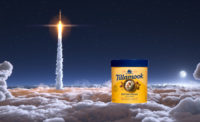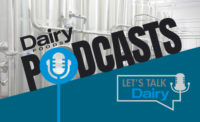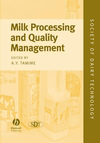Animal Farm Creamery sees tremendous demand
Western Vermont-based dairy processor offers a great story and products to match.

Photos by Brian Berk
A great boon for Animal Farm Creamery’s business is that restaurants owners and chefs alike like to speak to one another about successful products they use in the kitchen. Couple that with consumers researching the European-style butter that was described during Season 3, Episode 3 of Hulu TV’s “The Bear,” (see Processor Profile) and Animal Farm Creamery is seeing huge demand for its products. A recent “CBS Morning Show” feature about Animal Farm Creamery added even more interest and awareness about the company’s butter.
Hilary Haigh, who owns Animal Farm Creamery with her husband Ben and three children William, Emitt and Leland, is certainly thankful for the notoriety a celebrity chef and a subsequent TV show has brought to the Shoreham, Vt., creamery. But she acknowledges the business cannot grow too much. She has a family of three small children and also operates a farm on her property featuring 15 cows. The only additional employee is a milker who covers about three shifts a week. “That gives us just enough time to spend with our kids,” Haigh says with a laugh.
Time is clearly at a premium for the Haigh family. Hence, Haigh has been making equipment upgrades. The company recently upgraded its pasteurizer from a 30-gallon vat to a 60-gallon vat, and she is considering further equipment upgrades to make the business more efficient. “The new pasteurizer cuts down our processing time down,” she explains. “When pasteurizing, I used to do back-back loads of 25 gallons. Now I just do one 50-gallon load. It takes four hours, instead of eight. That is really great.”
Animal Farm Creamery generally produces about 130 to 150 pounds of butter per week. “We roughly get about 10 pounds of butter per cow, per week. Some of the cows are late-lactation, so we are a little less than 150 pounds per week of the butter at the moment,” Haigh notes at the time of our interview.
On a typical day, Haigh either pasteurizes milk or churns butter. She does creamery work from 4 a.m. to noon, while Ben milks cows. “We also have our kids who need to go to school. The bus does not come up our road due to the hills, so we need to drive them into Shoreham Village and pick them up,” Hilary Haigh says. “We also have a flock of sheep on another farm we lease.”
We witnessed much of the Animal Farm Creamery process at its western Vermont location near Lake Champlain, which best can be seen in the videos included in both the Processor Profile and this feature. This process includes pulling out the butter and rinsing it with fresh cold water to rinse out any last remnants of buttermilk. Hilary Haigh then massages the butter and folds it over get excess water to drain out. She subsequently takes out an ice cream scoop that allows her make one-quarter pound butterballs.
“I am in the creamery typically six days a week, four of the days are longer — about eight to nine hours, and two are shorter, about four hours. We milk a few less cows in February and March, so I get a little break then and usually get both Saturday and Sunday out of the creamery. It feels like I’m in there all the time though!”
Butter is sold based on standing orders to restaurants throughout the country. Any extra butter is sold to Brooklyn, N.Y.-based Saxelby Cheese. “They will take all leftover butter we have and sell it online by the pound. They will ship it throughout the country,” Haigh reveals. “We are exclusively wholesale, which allows us more time with the cows.”
Demand really picked up for Saxelby after “The Bear” episode aired. Animal Farm Creamery had no inkling its butter would be referenced — although not by its official name — in the episode.
“That was a great surprise for us. They called it ‘Orwellian’ butter. They made a joke it was ‘dystopian’ butter and how expensive it was,” Haigh notes.
Speaking logistics
Having a product in great demand is huge for any dairy processor. But when selling its products throughout the United States, logistical concerns can arise. Animal Farm Creamery does not have a delivery truck, nor would it be economical to have one when delivering product from Vermont to California, for example.
Fortunately, Animal Farm Creamery has an answer to that concern: FedEx. High-end restaurants have their own shipping accounts, and although the school bus cannot make it to Animal Farm Creamery to pick up the Haigh Family’s children due to the street’s hills, FedEx, known for its “The World on Time” slogan, can navigate the local streets and makes sure the butter arrives on time at various locations.
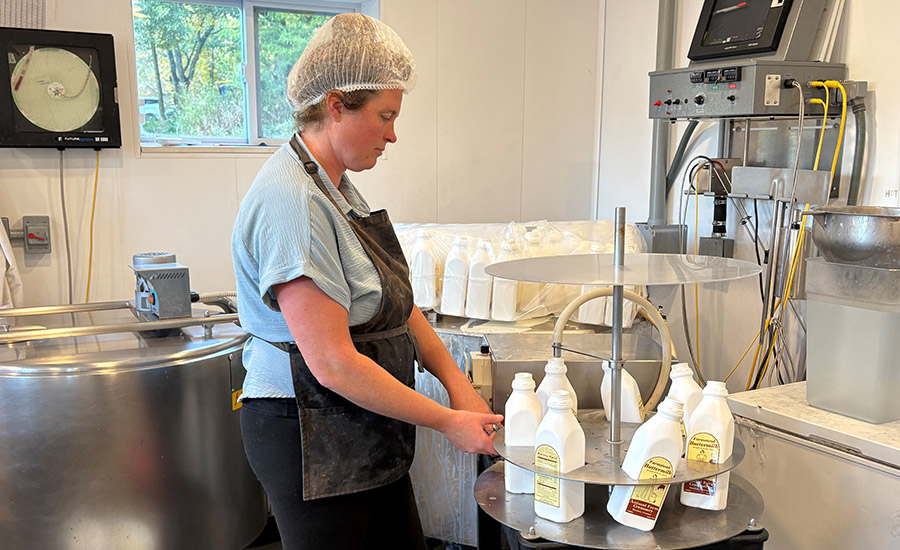
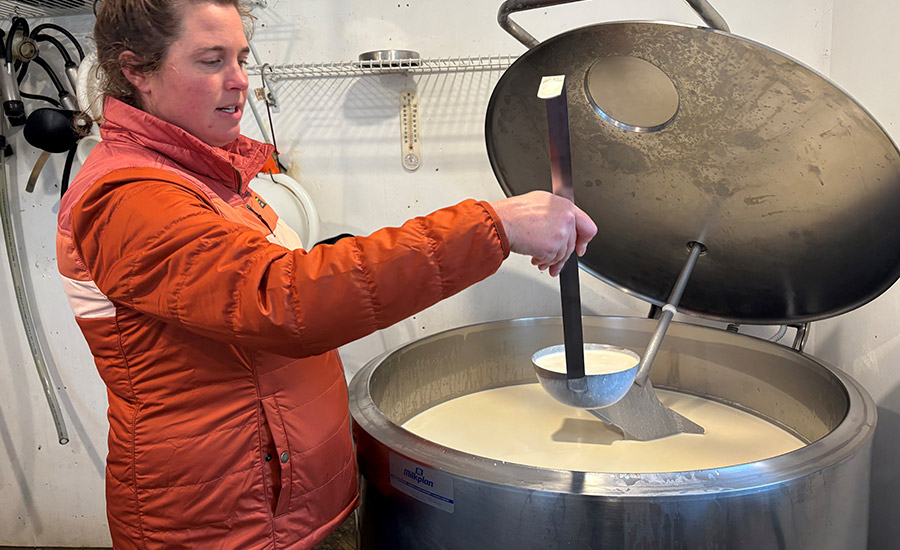
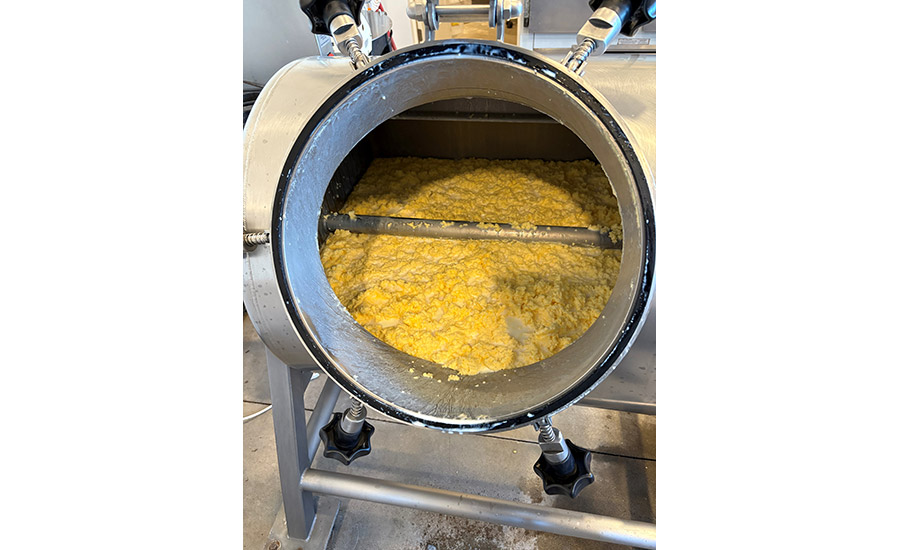
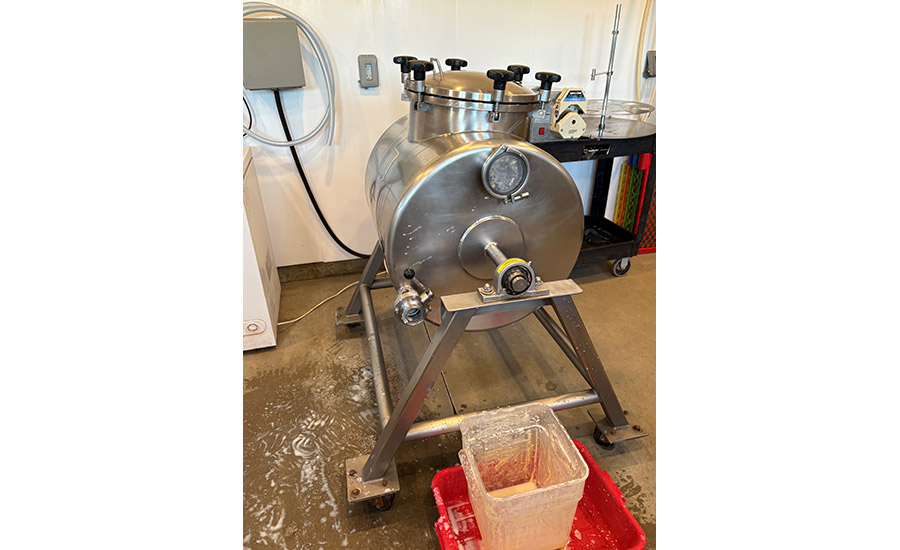
“On Mondays, I pack up all the orders in boxes. FedEx stops here every Monday, and they are great taking the boxes from a fridge I have hiding behind the creamery. I really need a shipping and receiving sign, but it just keeps working as the same driver comes every week and knows the ropes,” Haigh jokes.
Animal Farm Creamery does not need to worry about any fancy packaging when packing for FedEx, Haigh adds. Restaurants only care about the product. “Our logo is not getting displayed anywhere,” she says. “But restaurants do love to tell the story of our butter and of our family. Guests are buying our butter. But they are also buying the story of who we are and why the product is special. So, our logo may not be known to the public, but our story definitely is.”
Selling buttermilk is different. Animal Farm Creamery works with a distributor, Provisions International. “They come here every week as well, pick up their order and distribute it. They are really great because they visit many tiny farms. Provisions also delivers our extra butter to Saxelby. We have a great relationship there.”
Although the Haigh Family is too busy to open Animal Farm Creamery to the public, that could be in the cards in the future. The family has thought about the possibility.
“It would be so hard to fit in a tour right now. And we are still under construction. Once we get the farm building finished up, and the kids are old enough, we may find time for tourism,” Haigh concludes.
Looking for a reprint of this article?
From high-res PDFs to custom plaques, order your copy today!





